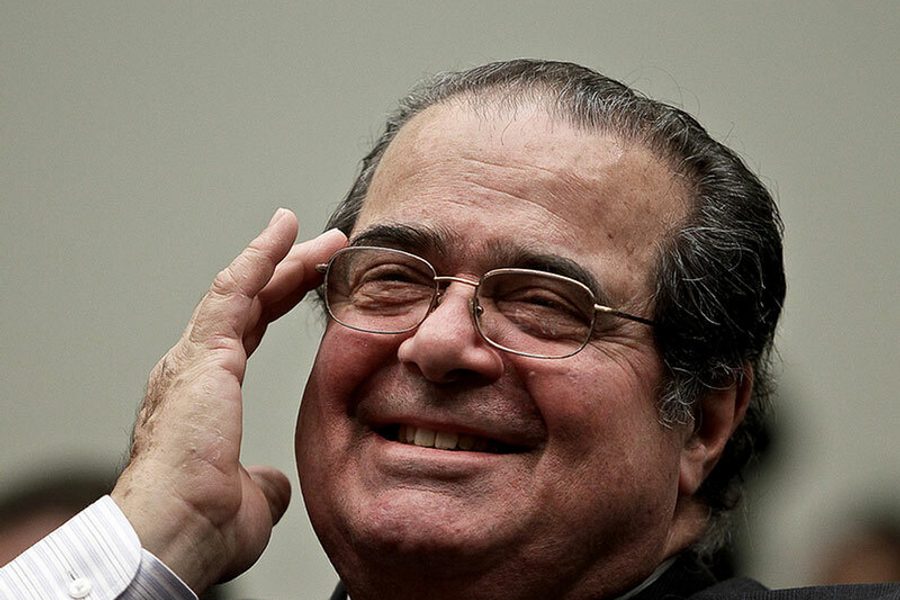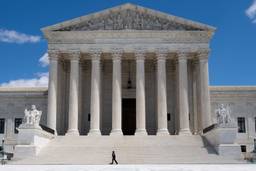
On Tuesday morning, something curious happened at the Supreme Court: Justice Antonin Scalia gave a full-throated defense of public-sector unions. The case, Harris v. Quinn, involves the narrow question of whether or not Illinois home healthcare workers are public employees — which determines whether or not they are permitted to join public-sector unions.
Illinois grants public-sector unions the right to exclusive representation — meaning that if they receive a majority vote, they automatically represent all employees — and lets them charge a “fair share” fee to employees who don’t join the union but are covered by the collective bargaining agreement. The broader question raised in the case is whether or not any public-sector union should enjoy these rights. This issue would affect every local, state and federal union in the country.
The challenge was brought by the National Right to Work Legal Defense Foundation (NRTW), an anti-union group whose mission “is to eliminate coercive union power and compulsory unionism abuses through strategic litigation, public information and education programs.” In a typical NRTW case this November, attorney William Messenger argued unsuccessfully before the Supreme Court that unions should not have the right to negotiate card check and neutrality agreements. Yesterday, Messenger tried to convince the Court that exclusive representation and fair share fees by public sector unions violate workers’ First Amendment rights. He claimed that, because public employee unions bargain over matters of public concern, the fees force workers to contribute to speech with which they may not agree.
But Justice Scalia was having none of it. Though Scalia is often cast as an ideological enemy of all labor—Salon stories by Josh Eidelson on this case and the neutrality agreement case, respectively, were titled, “Scalia’s Golden Chance to Kill Unions” and “Scalia’s Chance to Smash Unions” — here Scalia did not join with Justices Alito, Roberts and Kennedy in advancing the NRTW argument. Rather, Scalia was quick to question the very premise of the NRTW’s case, in a manner that set the tone for the remainder of the proceedings.
Scalia turned the NRTW argument on its head by raising the hypothetical of a policeman who, after asking a dozen times for a raise, was denied access to the police commissioner. Did he have his First Amendment rights violated? The answer was no. With this device, Justice Scalia highlighted how the Supreme Court has recognized that the government has wider latitude in dealing with its employees than in dealing with its citizenry. The police commissioner telling his secretary that he didn’t want to speak with his subordinate no more violated the policeman’s First Amendment rights than charging healthcare workers a fair share fee for union representation does theirs.
At one point in the arguments, when Justice Kagan suggested that Scalia believed that the NRTW position was valid, Scalia interrupted to clarify, stating, “I want to hear the answer, too, because, contrary to what Justice Kagan suggests, I didn’t say your First Amendment argument was valid … I said at least it was a comprehensible argument.”
When the NRTW attorney suggested that the way homecare workers negotiate for higher wages was not internal workplace speech, but rather more highly protected political speech, Scalia objected, saying, “Why isn’t it? I mean, it is for private employers.” Scalia went on to suggest that employers may stand to gain by having their workforce represented by a single union. “There are some private employers who think they’re better off with a closed shop and they just want to deal with one union. … They do this as private employers because they think it is in their interest as an employer. Why can’t the government have the same interest?” Coming from Scalia, these arguments have far more force than they would from one of the more liberal justices.
Seattle University Law Professor Charlotte Garden, the author of an amicus brief by labor law professors supporting the union in Harris, tells Working In These Times that Scalia’s position in this case was in line with his partial concurrent opinion in a 1991 case, Lehnert v. Ferris Faculty Association. “Scalia also accepted in Lehnert—and seemed to accept in the argument [on Tuesday] — that requiring the union to fairly represent all members of the bargaining unit, but not requiring the agency fee (which is a model that states are free to adopt) puts pressure on the bargaining relationship by allowing represented workers to free ride,” she says.
Though Justice Scalia has not traditionally been on the side of labor, his position in Tuesday’s argument should not come as a complete shock. What was at stake was states’ rights to make their own policy choices, which is ultimately a federalist argument. Conservatives have long described the importance of the states’ role as “laboratories of democracy,” and Scalia’s position was a conservative defense of the economic realities of organizing. Harris v. Quinn was that rare labor law case where reasonable conservatives could disagree.
Moshe Z. Marvit is an attorney and fellow with The Century Foundation and the co-author (with Richard Kahlenberg) of the book Why Labor Organizing Should be a Civil Right.








